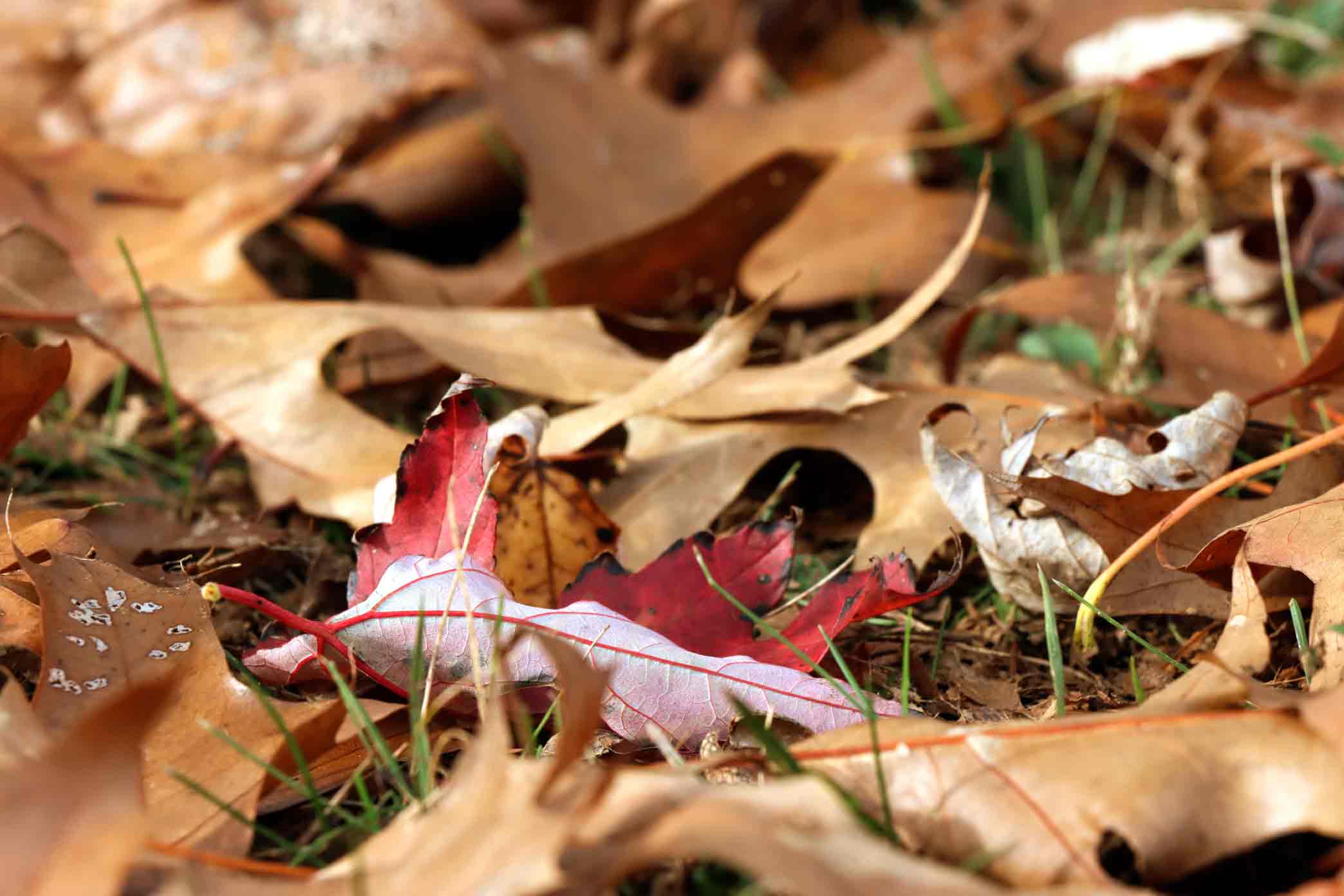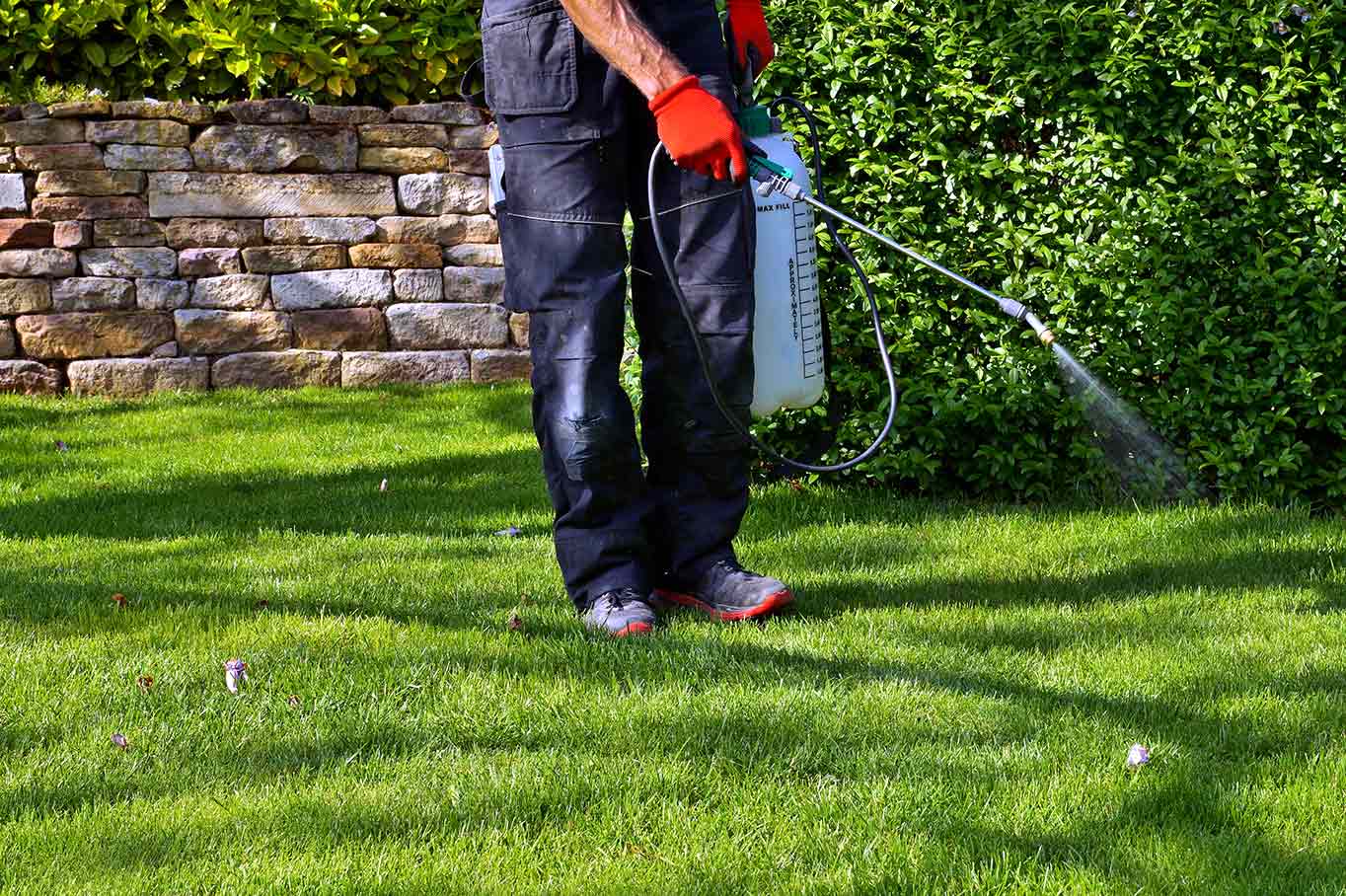Last Updated:
November 10, 2025
Spring in New Jersey is a time of transition, when lawns begin to wake up from their winter dormancy and prepare for a season of active growth. For homeowners, this period sets the stage for the entire growing season. The steps you take in March, April, and May can determine whether your lawn thrives or struggles through summer.
Join the Healthy Lawn team as we cover some of the best spring lawn care tips for New Jersey, from fertilizing to overseeding and much more!

New Jersey winters can be rough on turf, with snow cover, ice, and fluctuating freeze-thaw cycles that can lead to compacted soil, dead patches, and leftover debris. Before jumping into fertilizing or mowing, it’s important to evaluate the condition of your lawn.
Walk your property once the ground is no longer frozen. Look for areas where the grass appears matted down, bare patches have formed, or the soil feels overly hard underfoot. Many lawns in the state experience snow mold or damage from plows and foot traffic during the winter months.
Common post-winter issues in New Jersey lawns:

Early spring cleanup is an essential step for restoring airflow and preventing disease. Old leaves, sticks, and dead grass can block sunlight from reaching the new shoots trying to emerge. Using a flexible leaf rake or light dethatching rake, gently clear away debris without tearing up the tender early growth beneath.
In New Jersey, late March through early April is usually the ideal time to perform this first round of raking. By doing it early, you reduce the risk of fungal growth and allow the soil to dry and warm more evenly, which in turn encourages stronger root activity as spring progresses.

Fertilizing too early in spring can encourage fast top growth before the roots have fully awakened, so timing is crucial. In New Jersey, late April to early May is often the sweet spot for spring fertilization. By this time, the grass is actively growing and can make full use of the nutrients.
A balanced, slow-release fertilizer is typically the best choice for most home lawns. This provides a steady supply of nitrogen and other key nutrients over several weeks, promoting deep root development and steady greening without excessive mowing.
Key spring fertilizing tips for New Jersey lawns:

Winter damage often leaves lawns with bare or thinning patches. Overseeding is a key step to thicken the turf and prevent weeds from taking advantage of those open spaces. The best time to overseed in New Jersey is typically mid-to-late spring, once soil temperatures are consistently warm enough for grass seed germination.
Popular grass varieties for the region respond well to spring seeding when moisture levels are high and temperatures are mild. Before spreading seed, loosen the top layer of soil with a rake or aerator to help the new seeds make good contact with the ground. For best results, keep the newly seeded areas lightly moist for the first couple of weeks.

Crabgrass is one of the most common lawn nuisances in New Jersey, and once it takes hold, it can be difficult to control. The key to managing it is applying a pre-emergent herbicide before crabgrass seeds germinate. In most parts of the state, this means targeting an application sometime between mid-March and early April, depending on soil temperatures.
A good rule of thumb is to apply pre-emergent when forsythia shrubs begin to bloom, which is a natural indicator of the right timing. Using a pre-emergent herbicide at this stage creates a protective barrier in the soil that stops crabgrass and other annual weeds from sprouting.

When it comes to your first mow of the season, patience is key. Cutting the grass too early or too short can weaken it. Wait until your grass has grown about one-third taller than your target height before mowing. Maintaining the right height helps the lawn shade out weeds, conserve moisture, and grow deeper, stronger roots. For most New Jersey lawns, this means mowing in mid- to late-April.
Mowing guidelines to remember:

One of the biggest mistakes homeowners make in spring is watering too much, too early. New Jersey typically receives plenty of natural rainfall during March and April, which is usually enough to support early growth without supplemental irrigation.
If the season happens to be drier than usual, watering deeply and infrequently is the best strategy. Encouraging the roots to grow downward builds a more drought-resistant lawn that can handle the heat of summer. Aim for about an inch of water per week (including rainfall), applied in the early morning hours to minimize evaporation and fungal risk.
Spring is one of the most important lawn care windows in New Jersey. Whether you tackle lawn care yourself or work with a professional lawn care service, consistency and timing are everything. Taking action at this time of year can save you from bigger problems later, ensuring your yard stays healthy through the changing seasons.
If you are looking for help with your New Jersey lawn and yard this spring, call Healthy Lawn today to get started with a free quote!